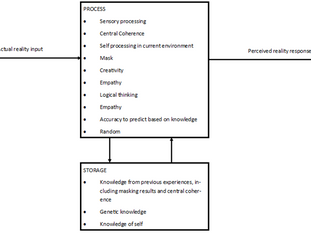
Creating an Inclusive School Environment for Students and Staff with Sound Sensitivity
0
26
0

Schools are bustling, lively environments full of sounds—from bells ringing to the chatter of hallways, from timers beeping to large assemblies. While many take these sounds for granted, students and staff who are hyper-sensitive to sound often experience them very differently. Everyday noises can become overwhelming, leading to anxiety, distress, or even meltdowns. By making simple adjustments to our school environment, we can create a more inclusive space where everyone feels comfortable and able to learn and work effectively.
Understanding Sound Sensitivity
To understand hyper-sensitivity, think of the brain as a sieve. For someone with hyper-sensitivity to sound, it’s as though the sieve’s holes are extra-large, allowing more sensory input to pass through and making it difficult to filter out noise. This increased flow of stimuli can feel overwhelming and even painful, causing stress and anxiety in what many of us might consider “normal” situations.
By recognizing how different environments and sounds affect individuals, we can take practical steps to create a welcoming space for neurodivergent students and staff.
Common Triggers and Practical Solutions
1. School Bells:
The loud ringing of school bells signals the end of each lesson, often startling those sensitive to sound. Consider the impact of replacing bells with a system where teachers keep track of time and dismiss students accordingly. This also eases congestion in the hallways, reducing both noise levels and crowding.
2. Fire Drills:
Fire drills are vital for school safety, but the sudden noise and urgency can be terrifying for sound-sensitive individuals. While it may seem counterintuitive to provide advance warning, many students benefit significantly from knowing about upcoming drills. This controlled preparation helps them build resilience. If the alarm ever goes off unexpectedly, students can be assured that it’s not a drill and know they need to evacuate immediately.
3. Raised Voices:
In situations where you may need to raise your voice, allow hyper-sensitive students to leave the room briefly. Quietly inform them of the need for a raised voice, so they can step outside, reducing the risk of distress. After you’ve given instructions, they can re-enter calmly.
4. Canteens, Cafeterias, and Corridors:
Busy hallways and loud cafeterias are challenging for sound-sensitive individuals. Allowing these students to leave a few minutes early from lessons provides them with the chance to avoid noisy, crowded areas, reducing anxiety and creating a smoother transition.
5. Assemblies:
Large halls with echoes and varied acoustics can amplify sensory sensitivity. Place sound-sensitive students near a door, allowing them to exit quietly if the noise becomes too much. Designate a “safe space” nearby, staffed by understanding members of the pastoral or SEND team, where students can go to self-regulate. For those who find large crowds challenging, consider live-streaming assemblies to the safe space, where students can watch in a quieter, controlled environment.
6. Timers:
The anticipation of a timer can be as stressful as the noise itself. Some students focus so much on the timer that they can’t concentrate on their tasks. Silent timers or a teacher-managed schedule can eliminate this anxiety, allowing students to engage fully without the fear of a sudden beep.
7. Field Trips:
The noise on buses during field trips can create significant stress for sound-sensitive students. Consider booking a larger coach and designating the front seats as a quiet zone. Staff members can be placed strategically to help manage noise levels and support students in finding a comfortable spot.
8. Classroom Demonstrations and Videos:
Video volume should be set just loud enough for all students to hear but not blaring. Give sound-sensitive students the option to sit where they feel most comfortable, reducing exposure to loud sound. Providing transcripts of video content is also beneficial for students who need to review at their own pace, especially those wearing ear defenders.
9. Ear Defenders and Music:
For students who find ear defenders helpful, providing an option for them to wear them can be empowering. If school policy allows, consider permitting all students to listen to music while they work. This not only supports sound-sensitive students but also normalizes the use of aids, creating a more inclusive environment.
Building an Inclusive Environment
When we make small changes to support those with sensory needs, we’re creating an environment where everyone can feel safe and accepted. Simple adjustments like quieter hallways, flexible seating arrangements, and advanced communication about drills build a culture of understanding and empathy. By prioritising neurodiversity, we’re helping each student and staff member reach their full potential without the added anxiety of navigating an overwhelming sensory environment.






